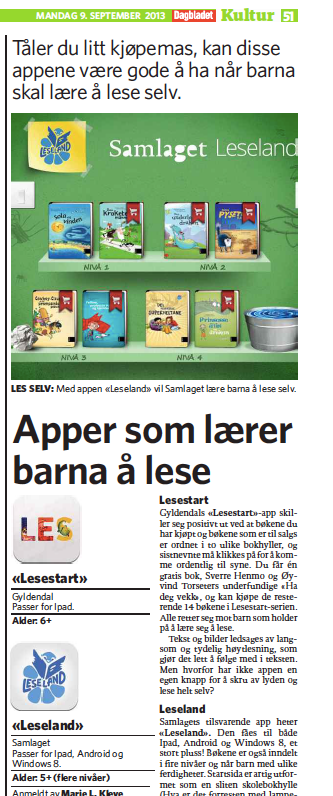Today Dagbladet, the second largest Norwegian tabloid newspaper, wrote about two children apps. They usually write about apps for children about once per month. But what was special for us about the reviews this time? In fact both the apps featured were made with our tool!

The apps in question are both using the possibility of creating a brand-specific channel to the customer, using in-app-purchasing – a feature in our tool for somewhat more than half a year now. And the consumer gets a title for free, to evaluate before paying a single dime. Classical win-win?
Leseland from Samlaget helps people learn to read, with four different levels of difficulty, and uses the “karaoke mode” to highlight text along with a very slow voice. The entire logic of the menu, selection of different voices and images they did with absolutely no help from us, just using the standard features of the tool. Fun for us to see, even if we also like to help customers that prefer to be less hands-on.
Lesestart from Gyldendal is a similar bookshelf with a broader range of titles and a very polished bookshelf-with-store concept with what I personally think is a super looking design and great user experience.
You can see part of the page from the newspaper here, and a similar article is now also online. The titles are in Norwegian.
